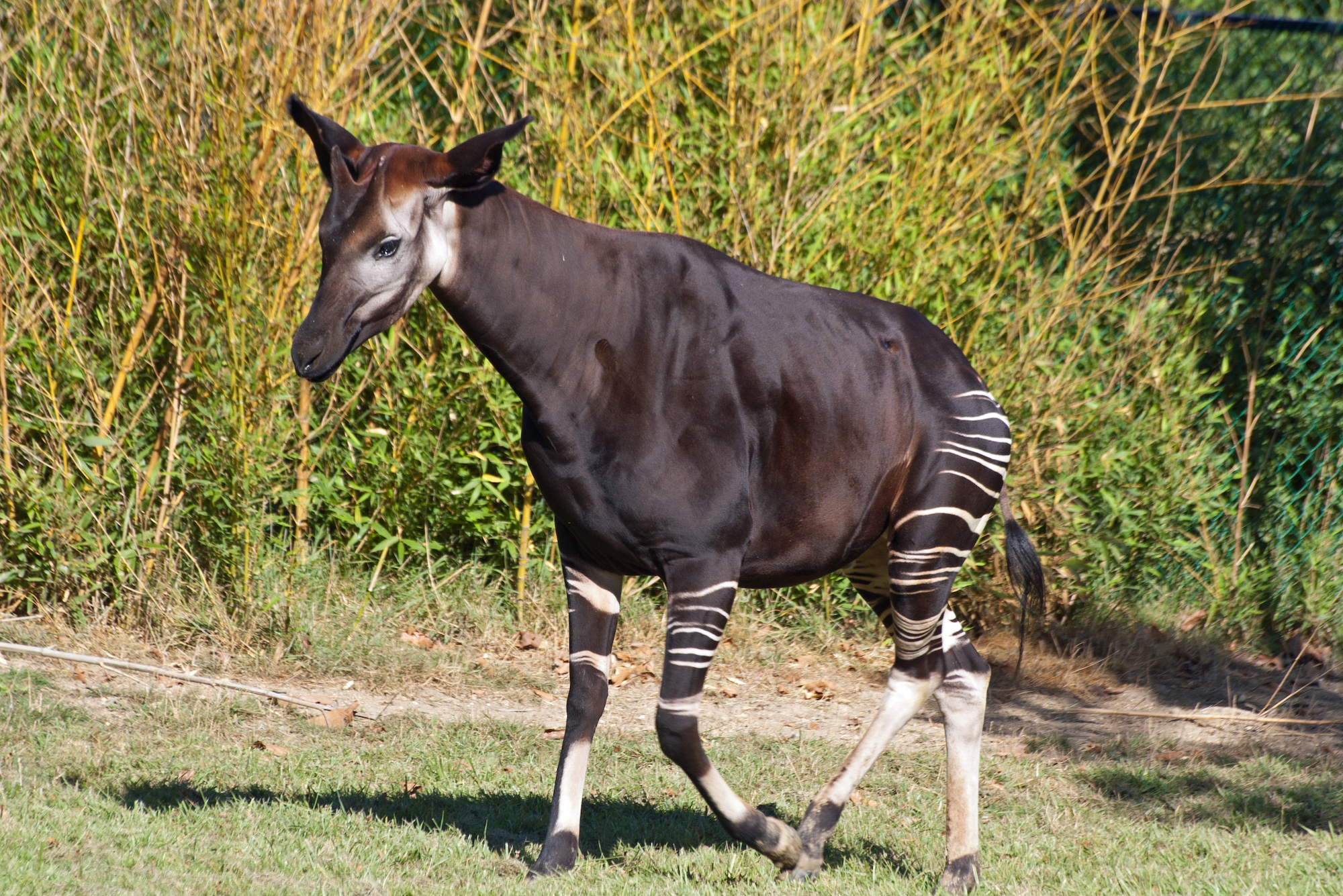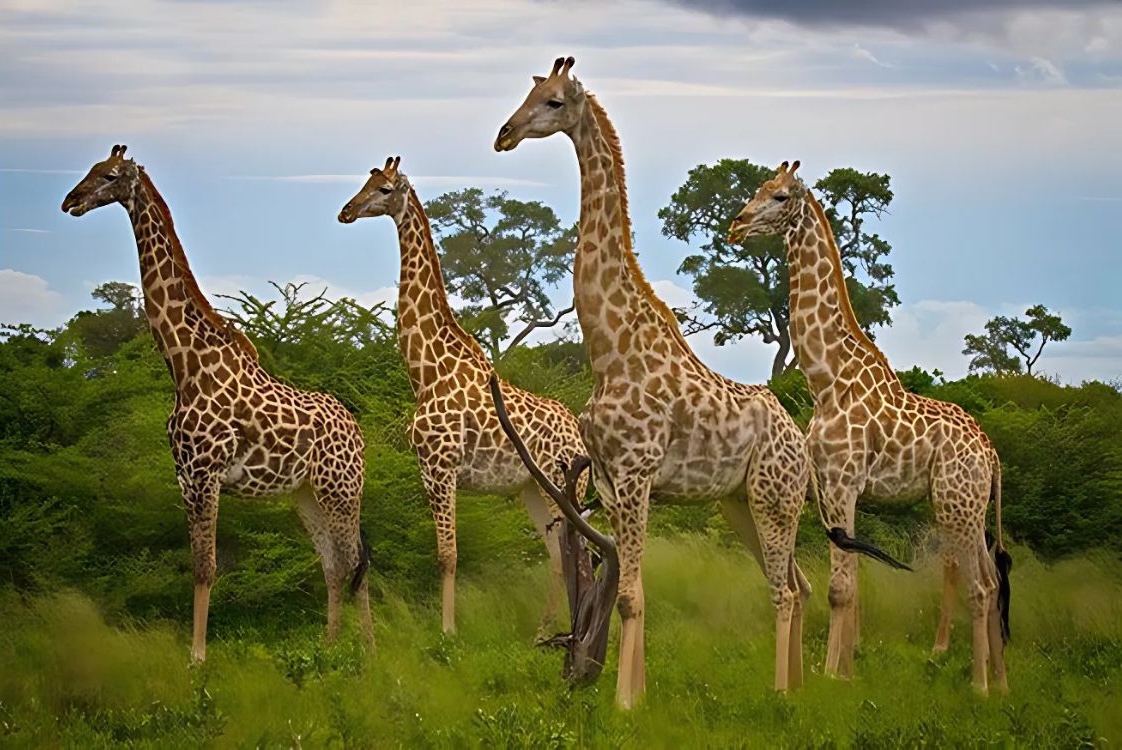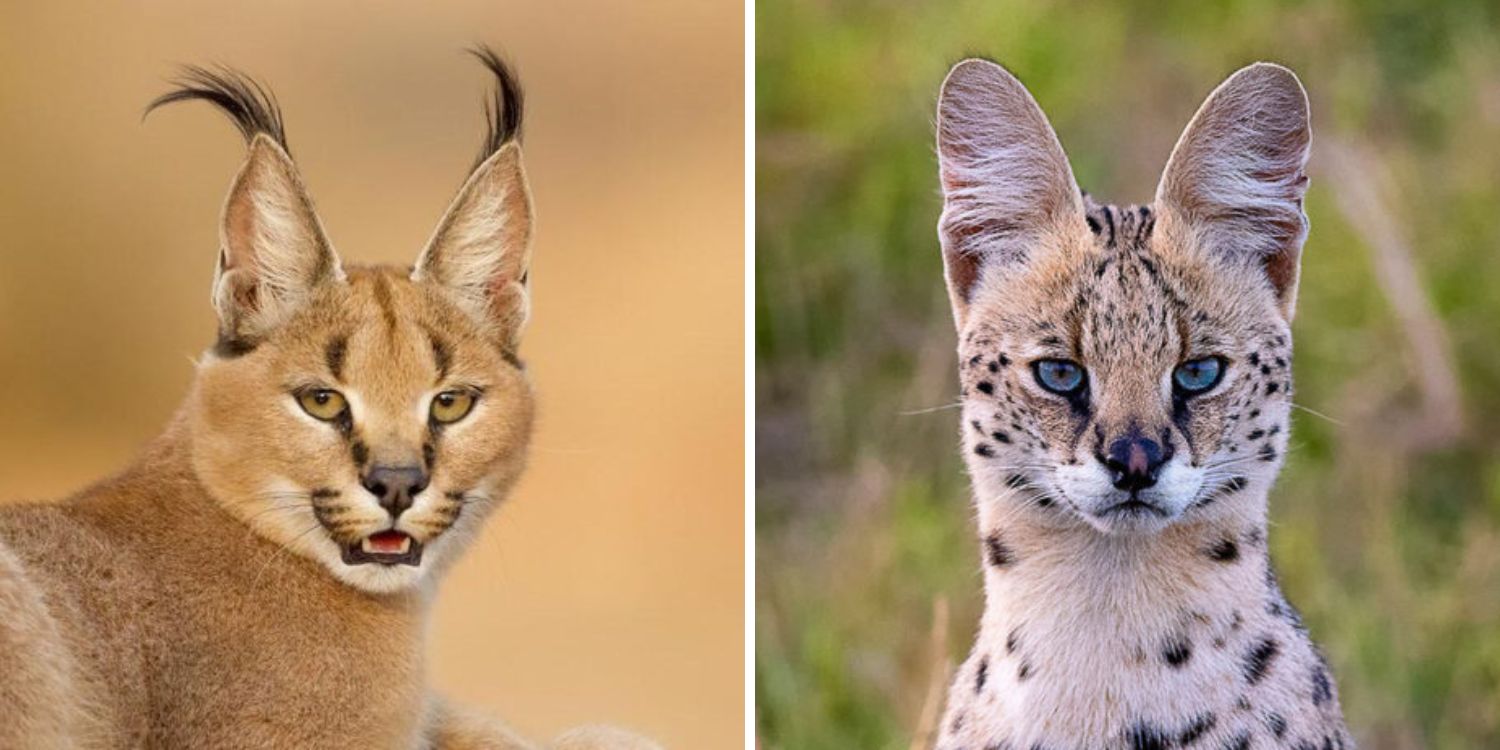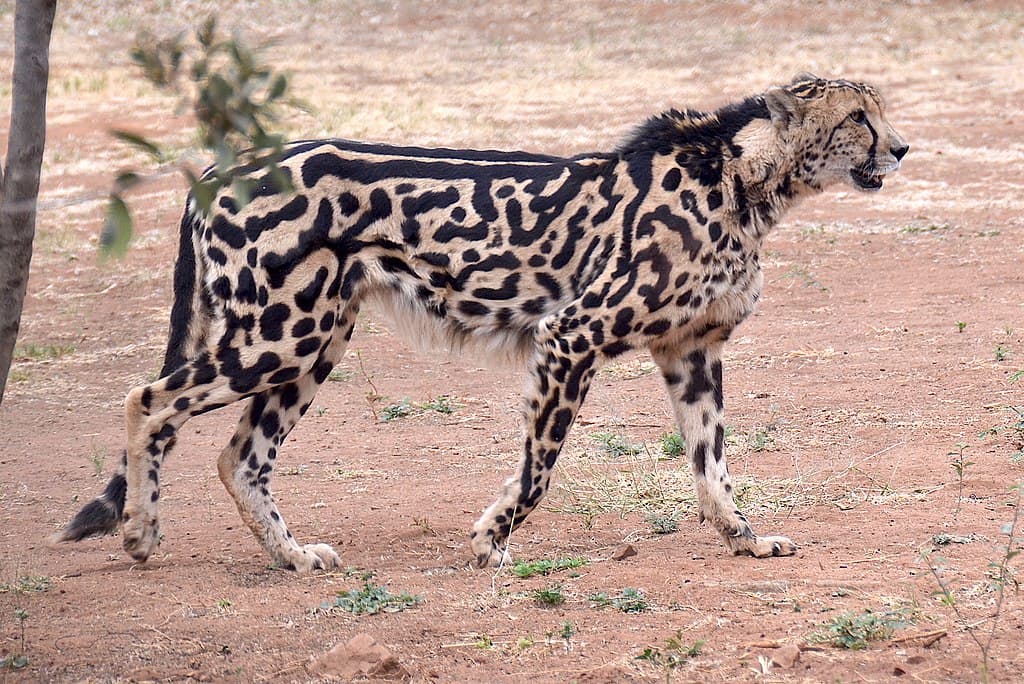
The Okapi: A Living Fossil in the Heart of Africa
Deep within the lush rainforests of the Democratic Republic of Congo lives a creature that seems like a figment of imagination: the okapi. Often referred to as the “forest giraffe” for its elongated neck and striped body, the okapi is a truly unique and fascinating mammal.
A Zebra in Disguise?
At first glance, the okapi (Okapia johnstoni) might appear to be a bizarre hybrid between a zebra and a giraffe. They have a sleek, chocolate-brown coat with distinctive zebra-like stripes on their legs and rump. However, okapis are actually more closely related to giraffes, sharing a common ancestor millions of years ago. Unlike their long-necked cousins, okapis have remained primarily forest dwellers, adapting to a life hidden beneath the dense canopy.
Hidden Gems of the Rainforest
Okapis are solitary and elusive creatures, preferring the quiet solitude of the rainforest. Their long, prehensile tongues, similar to a giraffe’s, help them reach leaves and fruit high in the trees. Their dark fur provides excellent camouflage, allowing them to blend seamlessly into the dappled sunlight filtering through the leaves.
Living Fossil
The okapi is sometimes referred to as a “living fossil,” as it has existed as a species over a long geological time period, and morphologically resembles more primitive forms (e.g. Samotherium). In 2016, a genetic study found that the common ancestor of giraffe and okapi lived about 11.5 million years ago.
Silent Sentinels
Unlike other large herbivores, okapis are remarkably quiet. They rely on keen hearing and a strong sense of smell to navigate their environment and avoid predators like leopards and crocodiles. Communication primarily occurs through scent marking and soft vocalizations.
A Cause for Conservation
Sadly, the okapi’s secretive nature makes it difficult to accurately assess population numbers. However, habitat loss due to deforestation and the bushmeat trade are significant threats. According to the IUCN Red List of Threatened Species, the okapi is endangered. While it’s not clear how many remain in the wild, scientists estimate that populations may have been slashed in half over the past two decades. Conservation efforts focus on protecting rainforest areas and raising awareness about this unique animal.
What You Can Do to Help
- Support organizations working on rainforest conservation in Central Africa.
- Choose products made with sustainably sourced materials to reduce deforestation.
- Spread awareness about the okapi and the importance of protecting its habitat.
By taking action, we can help ensure that this “living fossil” continues to thrive in the heart of the African rainforest for generations to come. The okapi may be a shy creature, but its role in the rainforest ecosystem is undeniable. Let’s work together to protect this hidden gem and its verdant home.
More photos below ↓












